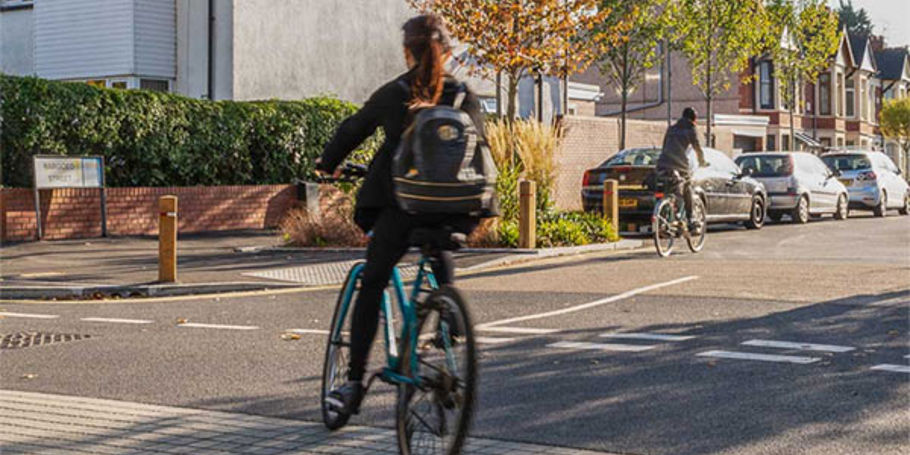Inclusive transport design for the Ovingham Level Crossing Removal Project
Ovingham Level Crossing Removal Project
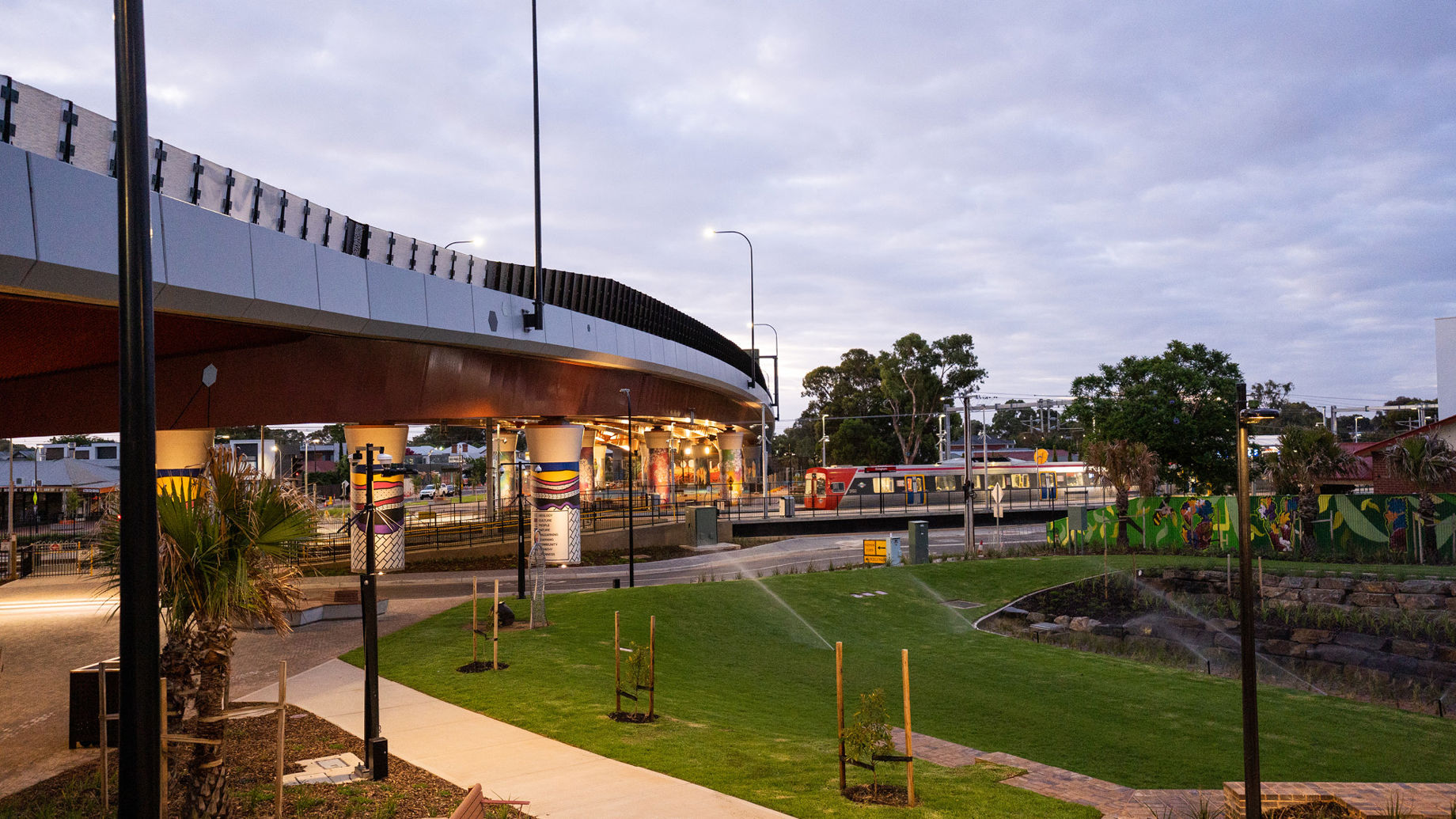
Ovingham is a busy suburb in the outer fringe of the city’s CBD. Previously Torrens Road, intersected with two rail lines near Ovingham Railway Station, requiring boom gates to stop traffic when trains were approaching. An average of 21,300 vehicles passed through the level crossing every day, and when the traffic flow was stopped for trains passing through, this caused congestion, frustration and increased car travel times.
Part of the solution was to raise Torrens Road above the rail lines and remove the road-rail level crossing.
The PTP Alliance brought together the Department for Infrastructure and Transport, Arup, Mott MacDonald and McConnell Dowell to deliver this level crossing removal project in Adelaide, South Australia. The new Karrarendi Yerta (Torrens Road bridge) is the centrepiece of the development, providing motorists with a continuous journey through the area. The removal of a rail-road crossing improves safety for motorists, cyclists and pedestrians.
At the outset, the PTP Alliance and their partners established the Kaurna Reference Group to prioritise First Nations collaboration at the project’s inception. The group comprised of Kaurna peoples, Traditional Owners of the Adelaide Region, and was an invaluable voice in collaboration regarding design possibilities. As a result of the consultation, stories were embedded in urban design elements and the surrounding precinct.
The precinct now provides open public space, with gardens showcasing Aboriginal art and culture, green spaces, connected pathways, and lighting considerations for day and night use by local communities.
Inclusive urban design of the precinct represents Indigenous culture
The PTP Alliance and their partners at Southern Cultural Immersion established an Aboriginal reference Group during the project’s design inception. The group comprised of Kaurna peoples, Traditional Owners of the Adelaide Region, and was an invaluable voice in collaboration regarding design possibilities. A clear and unanimous goal for all involved was to communicate to commuters who used the Karrarendi Yerta that this is Kaurna Land.
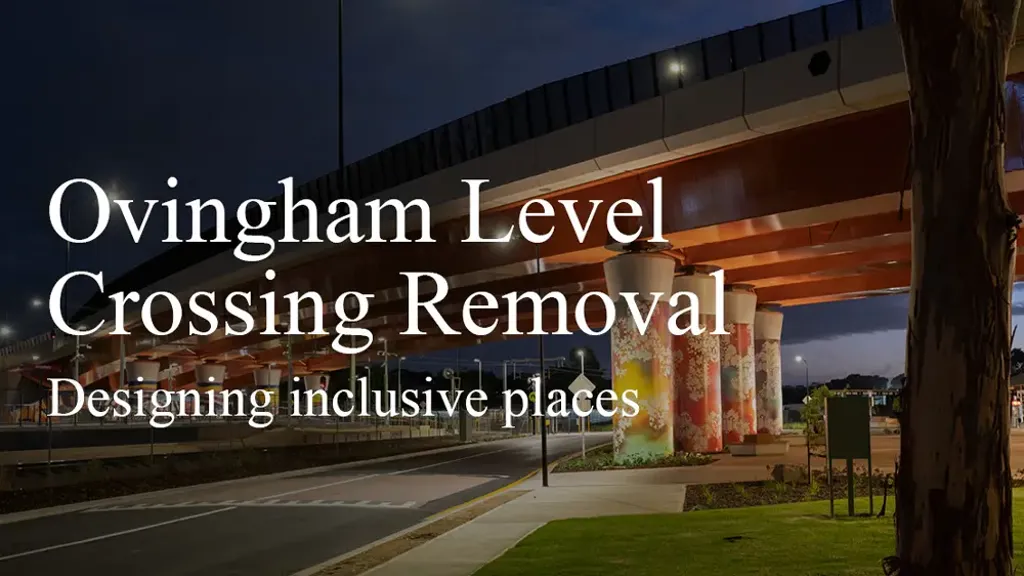
The consultation was an open discussion where stories were told and translated into urban design elements in the bridge, the plaza and the surrounding precinct. Some of the elements of the story were embedded in the structure of the bridge and in the paving of the plaza, while others were left to commissioned artists to convey in public art. The project commissioned six mural works on the abutments, the bridge piers and the Station equipment room, and four sculptural art works, with several participating in the telling of the Kaurna stories through thematic or conceptual alignment.
Developing trust between various entities was crucial to the project’s success. The relationships established between groups and the standard that was set regarding Aboriginal Cultural Expression and storytelling embody a process of reconciliation. This collaborative and respectful approach represents a benchmark in design which reaches far beyond the Ovingham Level Crossing Removal Project.



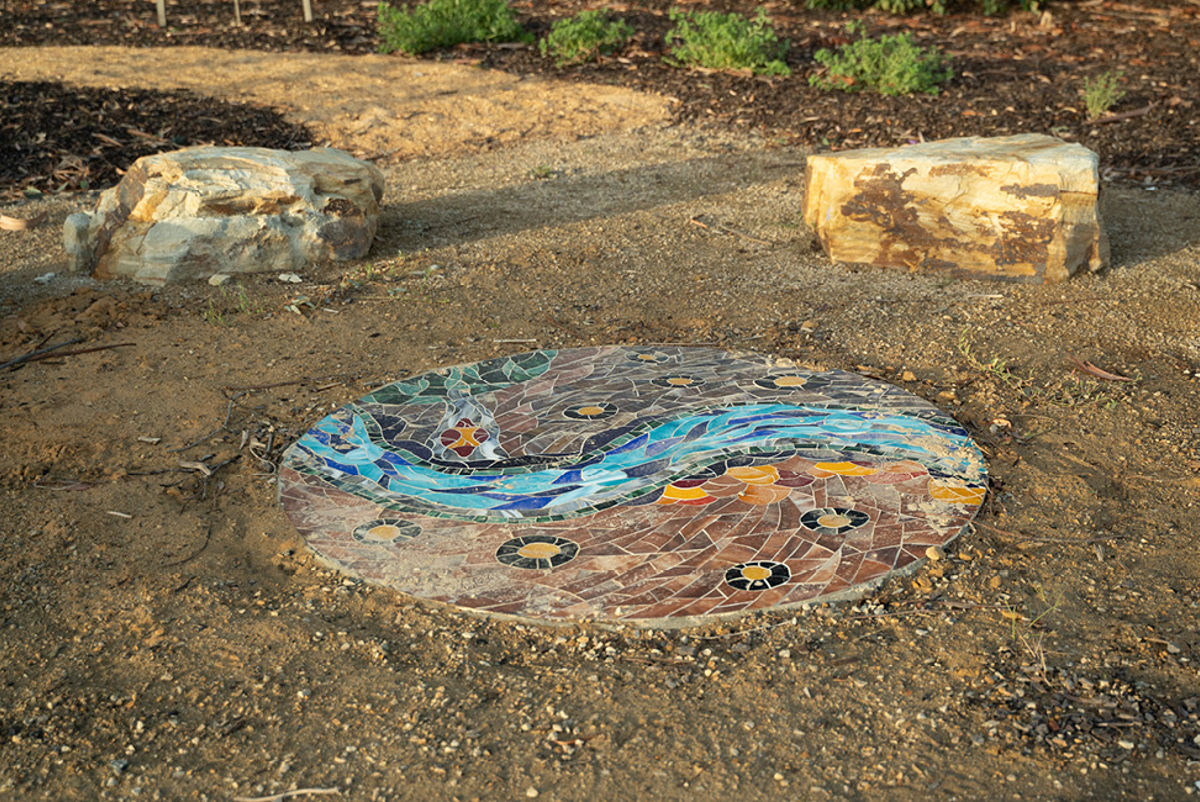
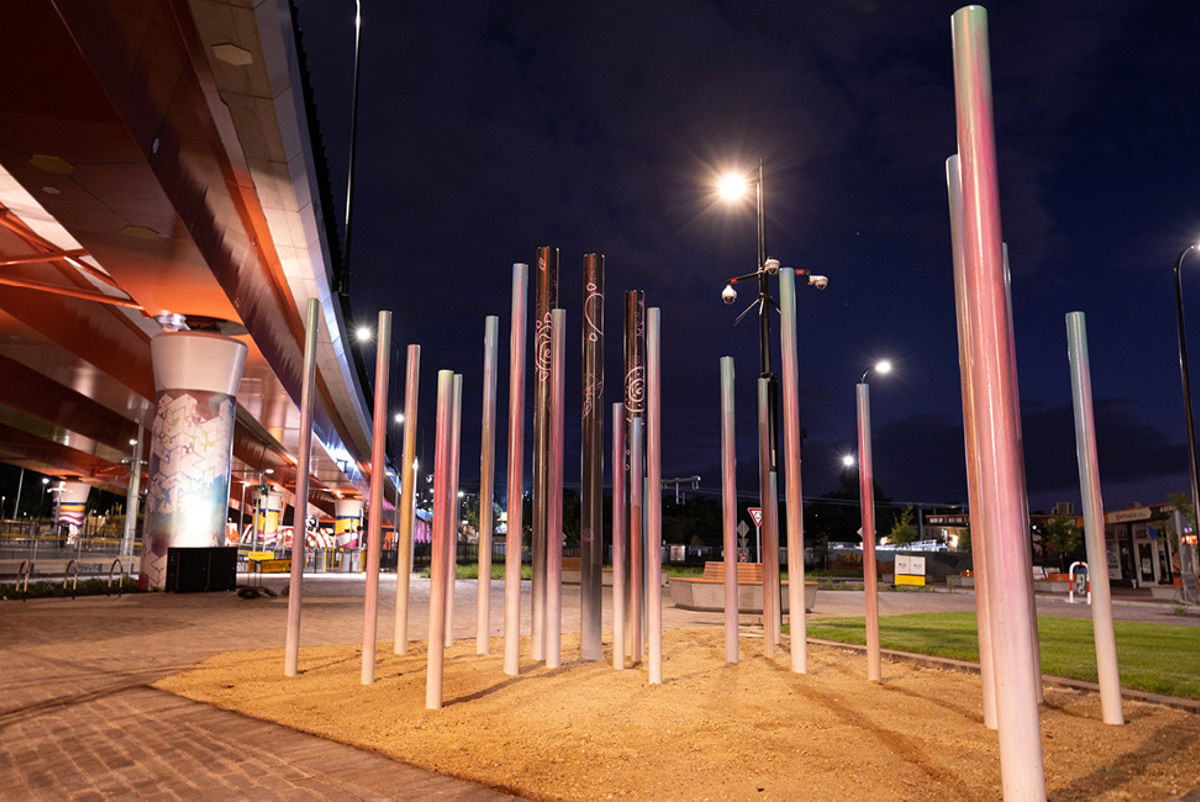
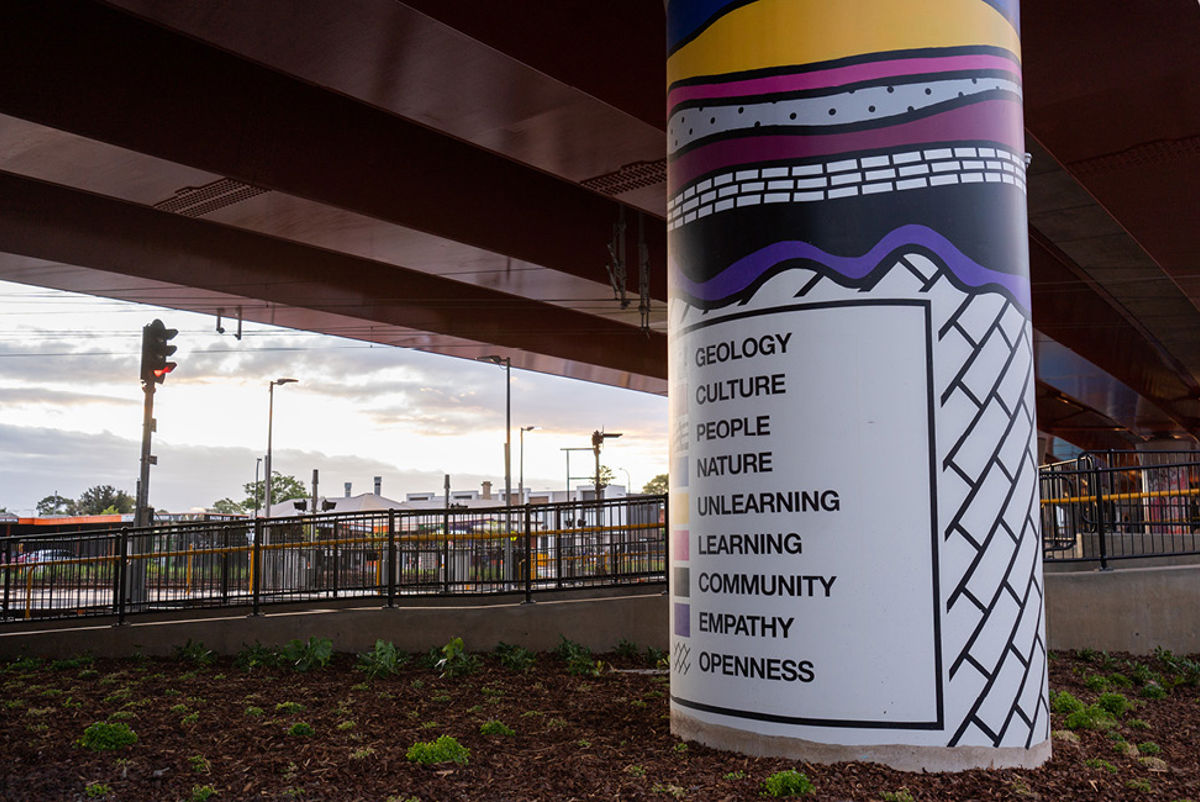
Project outcomes benefit the wider community, creating stronger ties
The goal of the Ovingham Level Crossing Removal Project was to increase efficiency of transport moments, improve safety and better ensure travel time reliability for commuters. Before construction, an average of 23,000 vehicles passed through the level crossing daily, with boom gates down at Torrens Road approximately 12 minutes per hour in peak periods.
The project’s centrepiece, the Karrarendi Yerta (Torrens Road bridge), allows motorists to bypass the rail intersection, regardless of train movements below, easing congestion and cutting travel times.
Safety for all road users is at the forefront of the development, with the removal of the rail-road crossing point benefitting cyclists, pedestrians, train commuters and motorists. Upgrades to Ovingham Railway Station also improve the commuter experience with the implementation of new shelters, improved platform access, lighting and CCTV coverage.
The redeveloped Ovingham Railway Station, new Karrarendi Yerta and new public spaces benefit the local community and passers-by. By increasing movement, community members who were previously severed by transport infrastructure are reconnected, allowing for freer movement through this precinct, strengthening ties with the community.
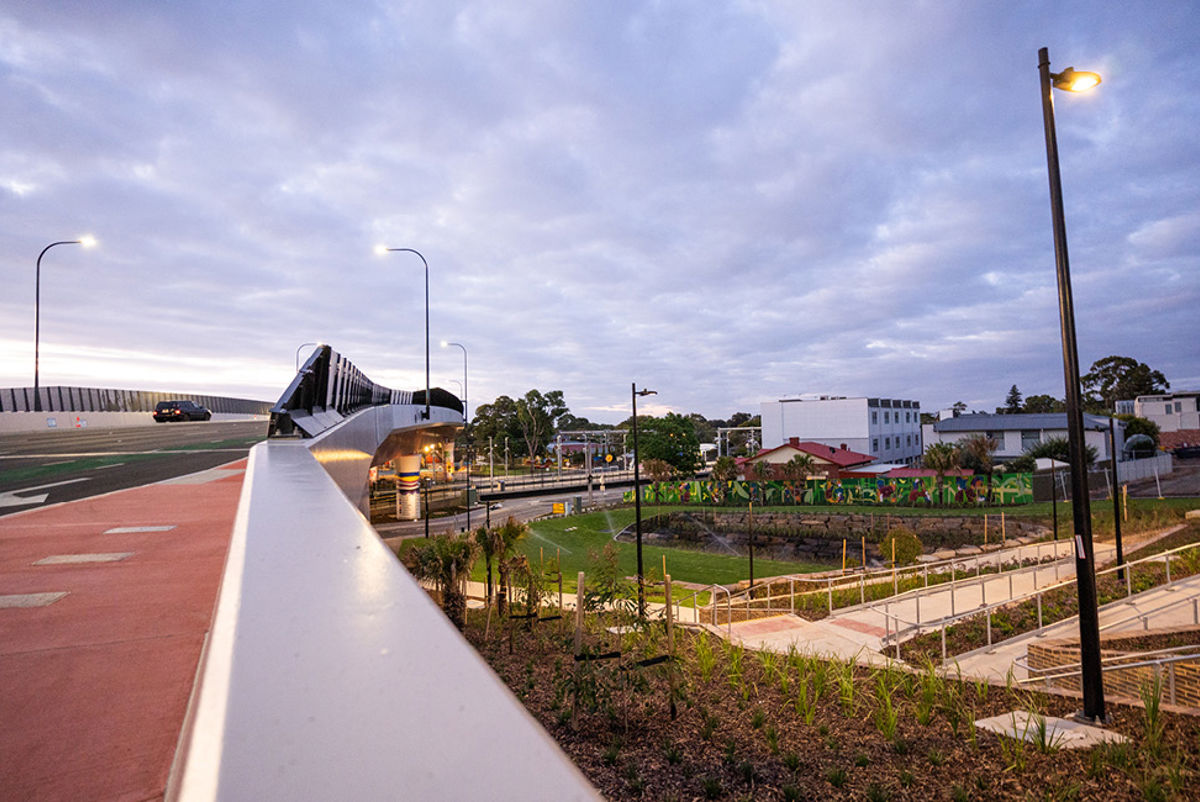
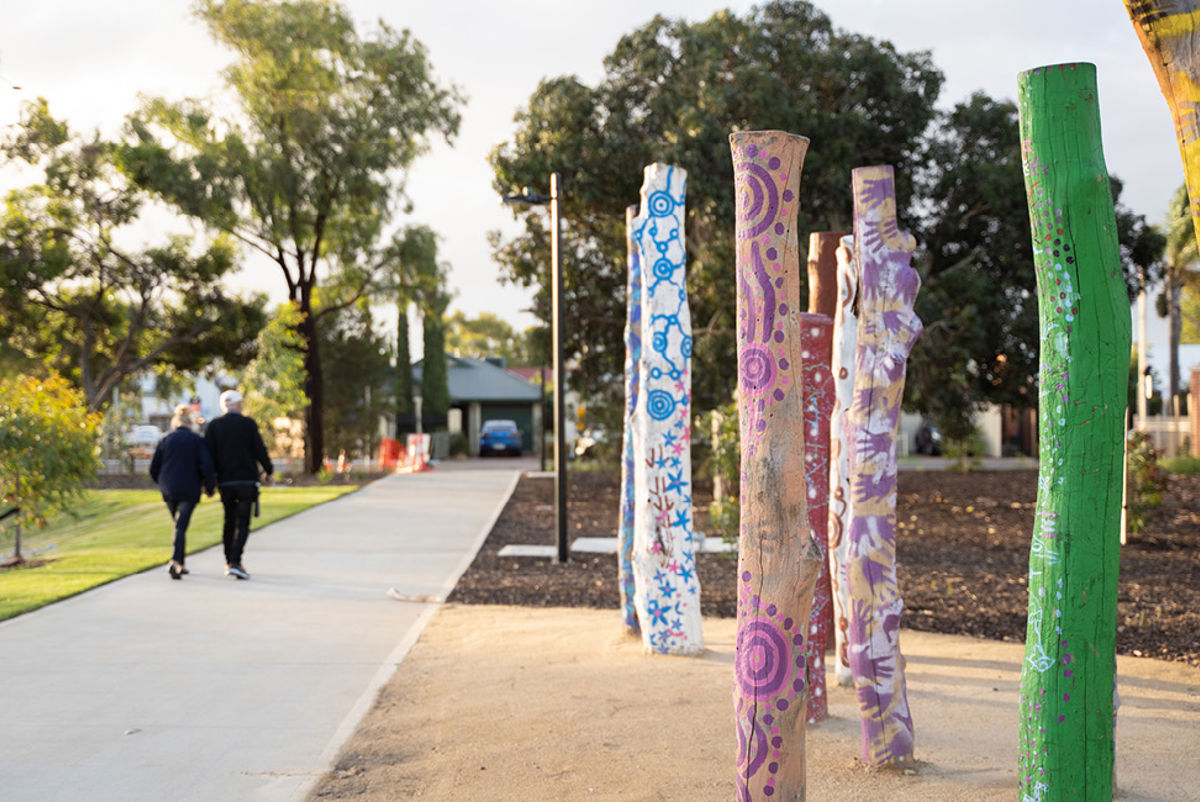

Innovative bridge design creates more public space
The Karrarendi Yerta (Torrens Road bridge) design uses a lower number of supporting piers than traditional bridge engineering, which created additional open spaces underneath for community space.
By using continuous steel composite girders, the PTP Alliance could achieve much longer spans between piers than the typical precast girders. This avoided the need for piers located near the railway tracks, which negated the need for large deflection walls usually required to protect piers within proximity of the rail. The longer spans also meant a reduced number of piers and subsequently minimised the number of underground service relocations.
Under the bridge, the large open space provides room for communal activity and connects to the wider precinct which showcases Aboriginal artistic elements depicting numerous Dream Time stories, which have been designed together with the Kaurna Reference Group.
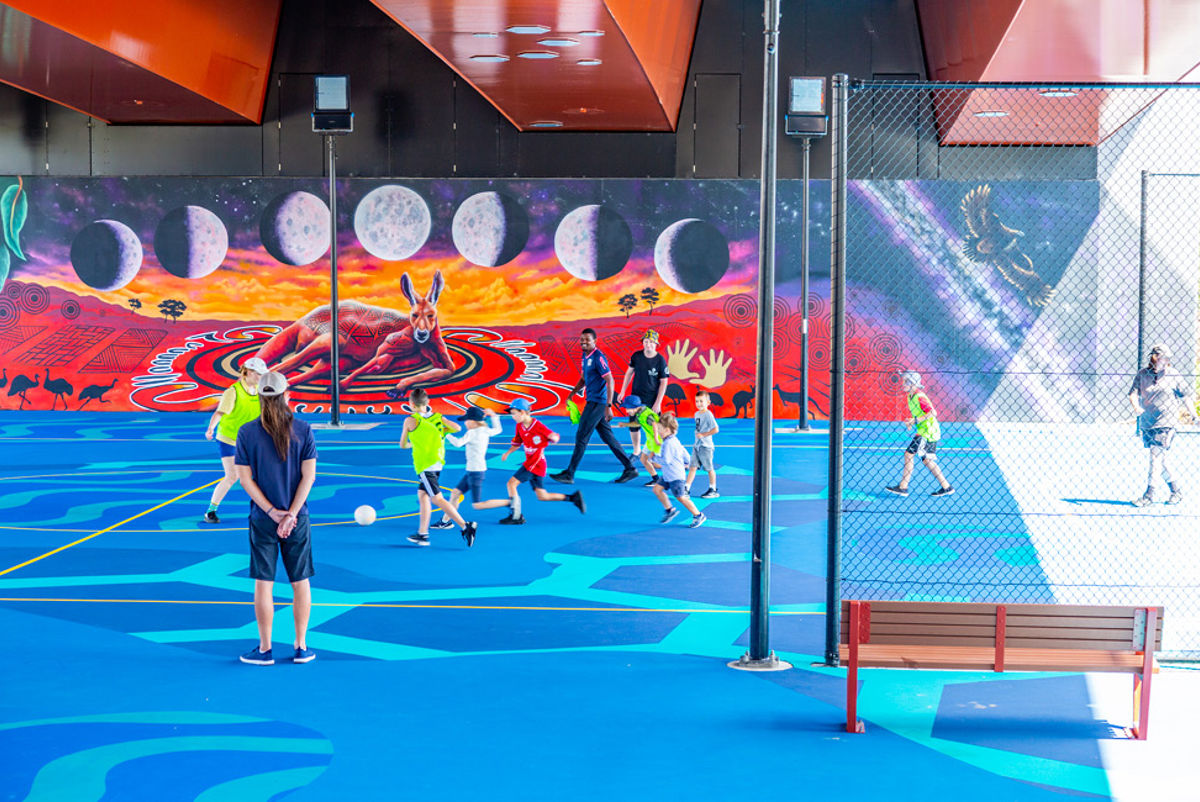
McConnell Dowell / Mott MacDonald / DIT / Cox Architecture / ASPECT Studios / GT Planning
What we delivered
-
The new Karrarendi Yerta bridge - the centrepiece of the development, providing motorists with a stop-free journey.
-
30,000 sqm approx. of new open public space, with gardens showcasing Aboriginal art and culture, green spaces, connected pathways.
Get in touch with our team
Projects
Explore more roads and streets projects
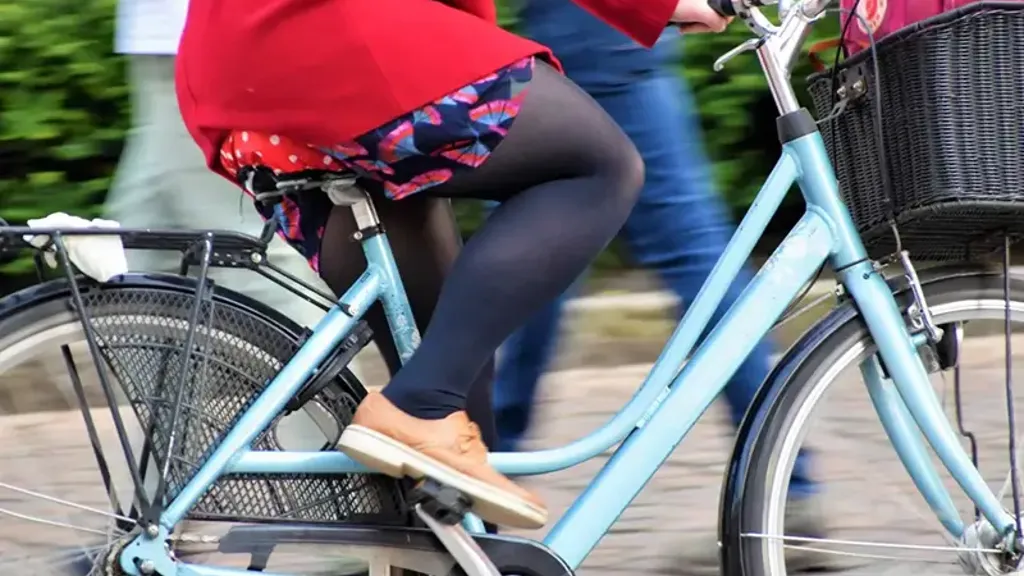
Helping Ankara to become a cycle-friendly city
Ankara cycling strategy and masterplan, Türkiye

Major redevelopment transformed with integrated transport and sustainable design
Cardiff Central Square
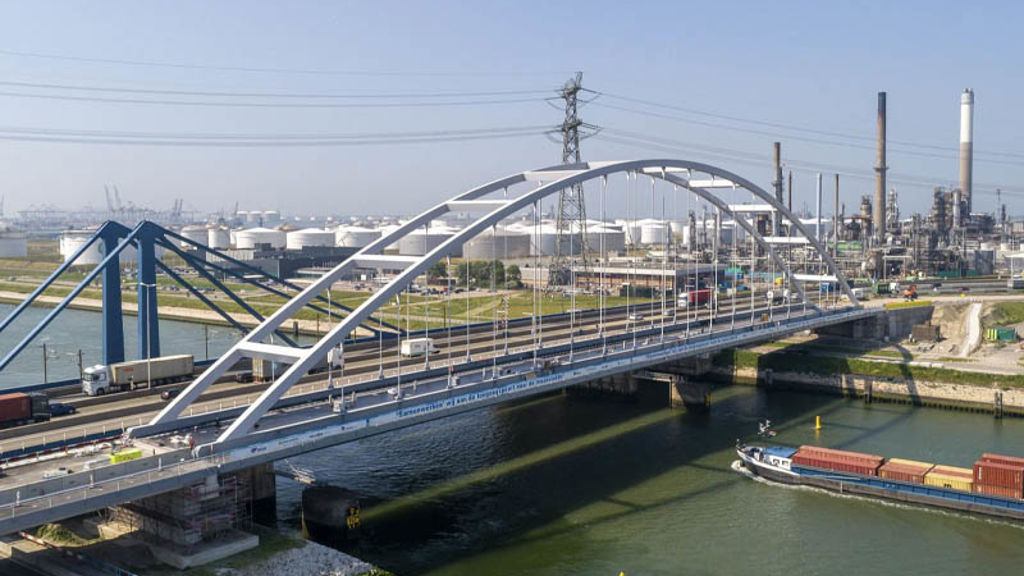
Strengthening Suurhoff bridge with innovations in bridge renovation
Suurhoff bridge, Netherlands

Sustainable innovation drives design of Copenhagen’s proposed Eastern Ring Road
Eastern Ring Road, Denmark
Get in touch with us
If you'd like to speak to one of our roads and streets experts about any of the issues raised on this page or a potential collaboration then please get in touch by completing the form.
